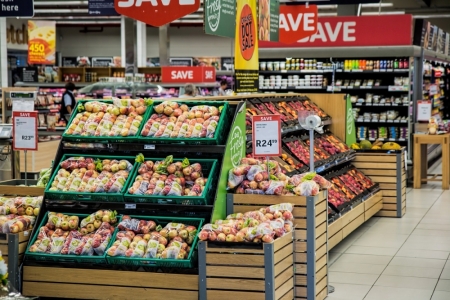Will the Coronavirus Pandemic Impact U.S. Food Supply Chain?

Much has been recently written about our nation’s food supply and consumer hoarding. I will not repeat what has been said, but rather offer additional perspectives during this trying time. This subject could be examined from numerous angles and fill many pages, but I will remain brief in this blog.
Our food supply chain is currently, and for the foreseeable future, functioning by the best means possible. Below I outline potential impending minor challenges and offer thoughts on how to mitigate those challenges.
What Could Be Potential Challenges?
- Consumers hoarding some foods and ingredients contributes to food security challenges and invites waste as products deteriorate. The act of hoarding could potentially impact our rural communities as supply chains struggle to maintain levels in larger metropolitan areas.
- Crops can only grow so fast, and they have limited shelf lives. Fortunately, hydroponic farming has enabled industry to overcome seasonality with selected crops, like lettuce, tomatoes and other green leafy vegetables, but many commodity crops are not even planted yet.
- This time of year, fresh produce comes from areas, like Florida and California, drastically impacted by this pandemic. This could ultimately impact industry’s ability to harvest crops and move products into the supply chain.
- The food ingredient supply chain could become stressed the longer this situation continues because many food ingredients are manufactured from agricultural commodities. As ingredient inventories become depleted, there will be a possible lag in re-building inventory to meet food processors’ needs, similar to the situation with perishable foods. This might limit availability of certain processed foods.
Mitigating the Challenges
How can the food industry and consumers mitigate these challenges as isolation orders continue? Here are a few suggestions directed at both parties:
Industry
- Food manufacturers must maintain their personnel, food safety and sanitation preventative processes. As the pressure mounts to move more food into the supply chain, they must resist the temptation of easing their safety standards in the interest of producing more food.
- Minimize waste throughout the supply chain—from field to plate. The industry has been diligently working on this for the past decade, but a fair amount of produce waste in the fields still exists. The focused efforts of processing plants has generated a number of great initiatives to improve sustainability, assisting with reducing raw and finished product waste.
- Reconsider introducing new products during this time. Current consumer behavior will not be indicative of their habits before or after this pandemic. Interestingly, several established food companies are observing that consumers are buying increased volumes of products they were familiar with from their youth. More consumers seem to be searching for comfort food.
- The food processing industry should run their most efficient processes to provide maximum inventory levels to fill the supply chain and feed consumers.
- Through advertising channels, promote that the supply chain’s security depends on consumers not hoarding and advise certain items may not be available until the crisis is better contained.
- Utilize remotely-working employees to map every step of your supply chain for every product you produce. Harvard Business Review published a blog indicating a small number of companies that took time to map their supply chains were better prepared during this pandemic to secure their raw materials and components, to keep plants producing at capacity.
Consumers
- Be safety conscious! Thoroughly wash your hands before, during and after food preparation. Right now is not the time to have a food safety incident.
- Be wise about using perishable food products beyond their expiration date.
- Do NOT hoard! The food supply chain is performing better than pre-pandemic levels, but consumers that hoard add to the uncertainties and unnecessary stress the system is experiencing.
- If you are confined at home, your activity levels may be lower than pre-pandemic. Appropriately reduce the amount of food you prepare and consume. This minimizes waste and is nutritionally beneficial.
- Be patient if your favorite products are not currently available. Food processors are running their production lines for maximum efficiency and product quantity. Your favorite products will return to shelves soon.
Food Industry Will Change
Fear not, this too shall pass. As we mentioned in a previous blog, the food industry will change after this pandemic. We have some indication of what the changes will look like, but the story evolves daily.
One thing we know for certain—the United States food industry is the safest in the world, and our supply chains can withstand challenges better than many other countries.
- Categories: